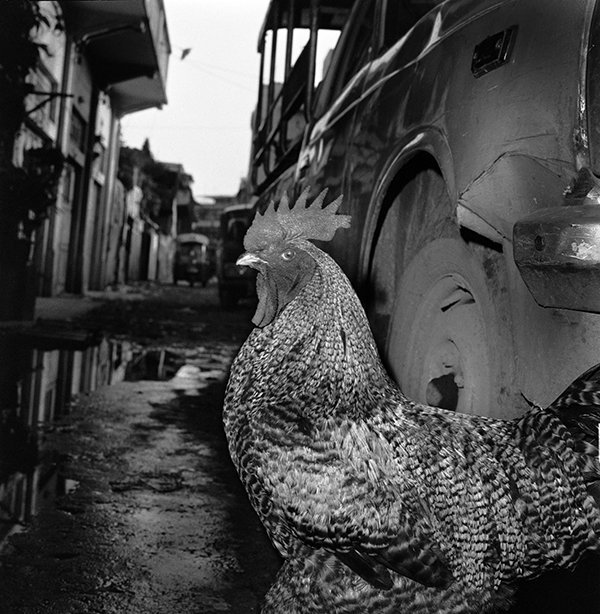
From the series Bangkok, Hanoi, “Back street behind Hua Lamphong Station (Bangkok’s central station). Early morning,” 1982 – 1987, Collection of Tokyo Photographic Art Museum
Seto Masato: Maps of Memory
Dec. 1, 2020—Jan. 24, 2021
- Dec. 1, 2020—Jan. 24, 2021
- Closed Mondays (if Monday is a national holiday or a substitute holiday, it is the next day), and Dec.29 - Jan.1
- Admission:Adults ¥700(560)/College Students ¥560(440)/High School and Junior High School Students, Over 65 ¥350(280) *Prices in parenthesis apply to groups of 20 or more. (Reservation is required.) , admission is free for grade school children or younger; junior high school students living or attending schools in the Tokyo metropolitan area and holders of Japan’s disability identification cards (shogaisha techo) together with two caregiver, and holders of the museum’s annual passport (check the Passport benefits at a glance) *Admission is free for everyone on January 2, 3 and 21. *Multiple discounts do not apply.
Seto Masato (1953 - ) was born in Udon Thani, Thailand, the son of a Japanese father and Vietnamese mother. In 1961, he moved from Thailand to his father’s hometown in Fukushima Prefecture. After graduating from the Tokyo Photographic College (now Tokyo Visual Arts College) in 1981, he began his career as a freelance photographer. In 1996, he was awarded the 21st Kimura Ihei Award for his collections Silent Mode and Living Room, Tokyo 1989-1994, in which he captured the lives of urbans dwellers from a distinctive point of view. He is now regarded as one of Japan’s foremost contemporary photographers.
During more than a half century of traveling back and forth between Japan and Thailand, Seto has focused on the lifestyles, faces, local customs, and natural settings in locations throughout Asia. “Photographs,” he observes, “are records which are at the same time memories.” The groups of photographs presented in this exhibition not only reveal memorable moments in this photographer’s career. They are, in effect, multilayered “Maps of Memory” sure to stir vivid emotions in those who see them.
The exhibition, which begins with Seto’s most recent work, Silent Mode 2020, includes photographs from every period of this photographer’s distinguished career, including his debut collection Bangkok, Hanoi 1982-1987. Through this substantial body of work, the exhibition introduces the faces of Asia as Seto has seen them.
Ⅰ. Bangkok, Hanoi (1982-1987)
Photographs in this series were shot when, after nearly two decades, Seto visited Bangkok, in Thailand, the land of his birth, and Hanoi, in Vietnam, where his mother’s relatives lived. They comprise a photo documentary of two of Southeast Asia’s largest cities that is also, for the photographer, a personal history that trances his roots.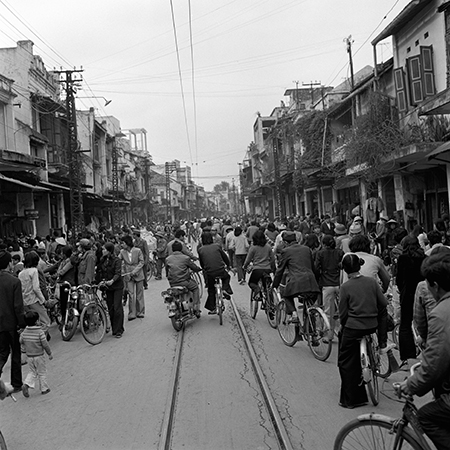
From the series Bangkok, Hanoi, “Hoan Kiem district, Hanoi. This main street leads to Dong Xuan market,” 1982 – 1987, Collection of the Artist
Ⅱ. Living Room, Tokyo [1989-1994]
For the Living Room, Tokyo series, Seto took photographs of immigrants to Tokyo from other countries in Asia and the Middle East as well as other parts of Japan in the spaces in which they live. These photographs bring into high relief another side of Tokyo, an international mosaic of communities whose members inhabit ordinary apartment complexes.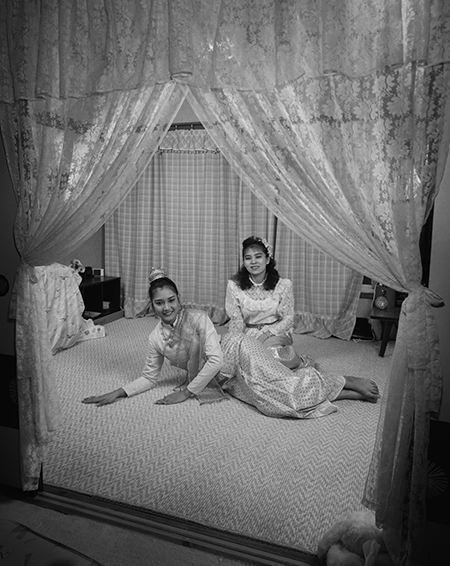
From the series Living Room,Tokyo, “Noina (28, foregraound), with friend rooming with her, from Bangkok, Thailand,” 1989-1994, Collection of the Artist
Ⅲ. Picnic [1995-2003]
Picnic is a series of somewhat distanced-feeling photographs of couples who have spread plastic sheets or are sitting on the grass spending time together in Tokyo’s Yoyogi Park or the Futakotamagawa Green Area. At first glance these seem to be bright, cheerful scenes; but Seto comments, “These photographs may be showing us fragile, soon to disappear moments.”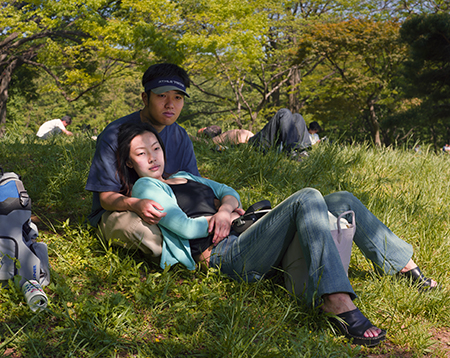
From the series Picnic, 1995-2003, Collection of the Artist
Ⅳ. Fukushima [1973-2016]
In 1961, the eight year-old Seto, who had been born and raised, until then, in Thailand, moved with his family to his father’s hometown, Date, in Fukushima Prefecture, where he lived until he was twenty. After choosing to make freelance photography, he traveled first to Bangkok and Udon Thani, then to Hanoi, Vietnum, where his mother’s relatives were living. After identifying his roots in these different cultures, he returned to Japan to document Fukushima landscapes. In this series, he presents a personal record of the past, present, and future of Fukushima.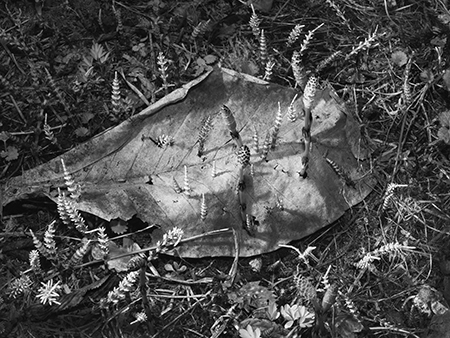
From the series Fukushima, “Aizuwakamatsu,” 2013, Collection of the Artist
Ⅴ. Binran [2004-2007]
In the countryside in Taiwan, there are small shops called “binran stands.” These rectangular glass booths have tiled floors in lattice patterns. In Seto’s photographs, we see scenes in which they stand behind neon-lit glass looking like androids with frozen eyes, with every detail exquisitely captured.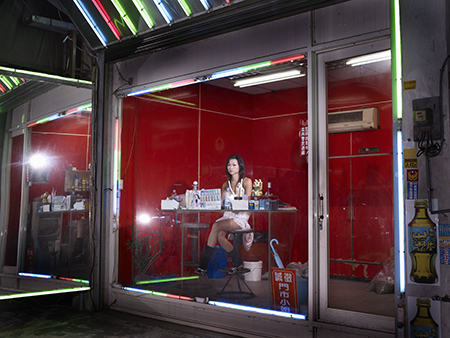
From the series Binran, 2004-2007, Collection of AKIO NAGASAWA GALLERY
Ⅵ. Silent Mode 2020 [2019-2020]
Human expressions are constantly in motion, as attention and feelings shift from one place to another. How, then, are we to recognize someone? In this series we see revealed the uncanniness and diversity of human beings.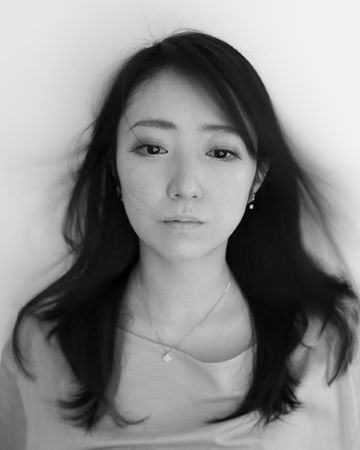
From the series Silent Mode 2020, 2019-2020, Collection of the Artist


![チラシ1[pdf]](http://topmuseum.jp/upload/4/3843/thums/20201210121423.png)
![出品作品リスト1[pdf]](http://topmuseum.jp/upload/4/3843/thums/setomasato20201201_list.png)